For my final project I created a claymation titled “Theory On Friends and Strangers”, inspired by a mathematical theorem governing group dynamics. I took my projcet in a slightly different direction by illustrating the negative consequences that some group dynamics can have. My video is two acts, the second act is about the negative effects that the group members have each other. I plan on expanding on and clarifying the second act.
My video:
Theorem On Friends And Strangers
My character models:

My ‘studio’:
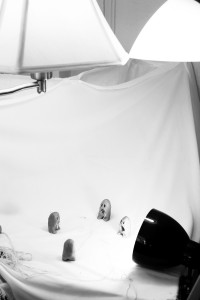
A page from my storyboard:
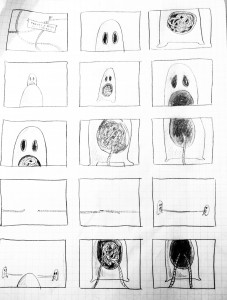



I have completed the character models and other props needed for my animation. My characters may have some changes. I am now deciding how I want my video to look. I am leaning towards a crisp black and white film at the moment. I don’t usually do black and white but I think it could look nice here. After setting up some shots and experimenting with lighting, I am ready to start animating.
I would like to go in a direction towards a claymation animation for my final project. While researching artists working in this medium, I came across some really amazing work by Allison Schulnik. The movement in the clay reminds me a bit of ‘Baby Snakes’.
Here is her website, she also does painting and sculpture work:
http://www.allisonschulnik.com/#
Below are some screenshots from her films:
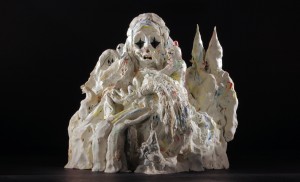

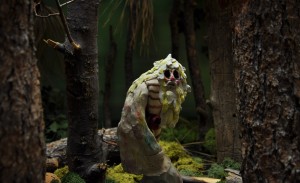
The general theme of my final project is human interaction with others.
I know that I want to make a video piece but I have two ideas on the subject matter.
One idea, is based off of the mathematical Ramsey Theory, specifically the impact of Ramsey theory on the Theorem on friends and strangers, which can be read about here: http://en.wikipedia.org/wiki/Theorem_on_friends_and_strangers.

I was thinking either embroidering or molding the heads and making the video piece of the lines being stitched, or tied.
My other idea was to create, using molding, knotting, and sewing, a 3D environment that is just as detailed and particular at a large scale as it is at a small scale. I would then incorporate a similar idea to my knotting project, and bring in some animals and humans to interact with each other and the environment. I would film this experiment.
http://emilykatz.virb.com/embroideries
Really really beautiful embroidered illustrations.
Does work on several types of fabrics and also embroiders material like paper, which allows her to incorporate watercolors and other materials not as suited for fabric pieces.


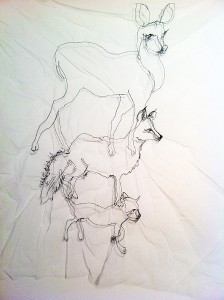

This artist has a really cool process for his embroidery works:
He “unworks” cross-stitch samplers, and then re-works the ground fabric in the same number of stitches and colors as the original composition (a ghostly outline remains).
http://www.briangrossfineart.com/exhibitions/ssollins05.html

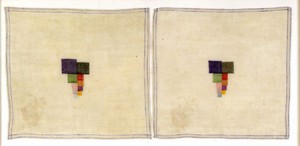
I really appreciate both the aesthetic and the process of his work.
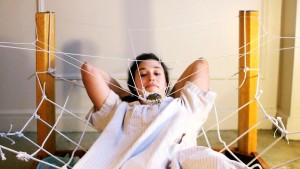
For this assignment I drew inspiration from a fable I remember fondly from my youth, Aesop’s ‘The Lion and the Mouse’. In this fable, a mouse proves he is more worthy than he appears by chewing a lion free from a rope trap.
http://vimeo.com/52825999
(more…)
This is Philippe Petit, a french high-wire artist. He made a famous traversal of the twin towers on tightrope in 1974. I think many parts of this performance apply to our current assignment on ‘comfort’. It also brings up a distinction between performance and performance art. How would you categorize Petit? An artist or a showman?
There was also an academy award winning documentary on Petit, “Man on Wire”: http://www.manonwire.com/
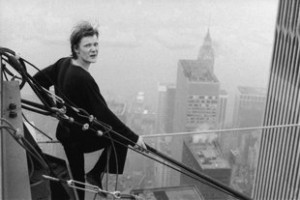
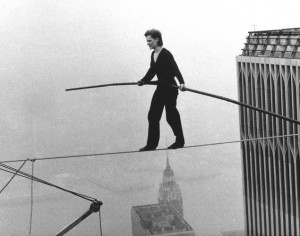
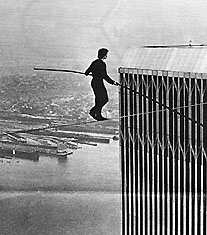
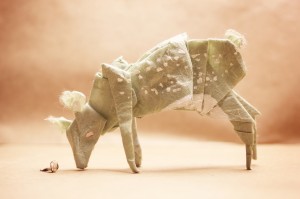
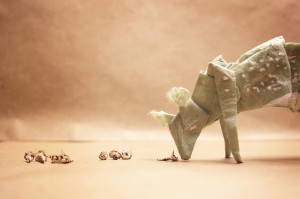
In thinking about progress, I was immediately attracted to the process of analyzing the progress we have made in order to predict the behavior of things to come.
(more…)
Robert J Lang talks about his artistic process as an origami artist:
Some examples of origami replacing other soft materials in clothing and fashion:
http://tinyurl.com/8jp68g3
http://tinyurl.com/9o3hb2j
Trying my hand at folding bluebirds:

Simple instructions: http://www.origami-fun.com/origami-bird.html






















